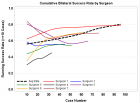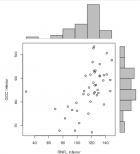Table of Contents
Evaluation of catheter related bacteremia in patients with end stage renal disease on hemodialysis
Published on: 25th April, 2023
Infections are common complications among patients on chronic hemodialysis. Hemodialysis patients with a catheter have a 2- to 3-fold increased risk of hospitalization for infection and death compared with patients with an arteriovenous fistula or graft [1].
The prevalence and risk factors of chronic kidney disease among type 2 diabetes mellitus follow-up patients at Debre Berhan Referral Hospital, Central Ethiopia
Published on: 20th February, 2023
Background: Chronic kidney disease is a progressive loss in renal function that is more accepted as global public health importance and its magnitude is overgrowing in the least developed countries like Ethiopia. No data was found in Debre Birhan Central Ethiopia on the magnitude of chronic kidney disease among type 2 diabetes patients. Methods: Institution-based cross-sectional study was conducted among 327 at Debre Berhan Referral Hospital from March to June 2019 in Adult (≥ 18 years) type 2 diabetes follow-up patients who volunteered to give informed written consent were included in the study. Systematic random sampling was used. Data were collected by interviews using structured and pre-tested questionnaires. Descriptive statistics of the continuous and categorical variables were done. The bi-variable and multivariable logistic regression was done to show the net effect of explanatory variables on chronic renal disease. Results: A total of 327 study participants were involved in the final analysis. The Prevalence of CKD among type 2 diabetic patients was 15.9%. A significant association was found with age > 60 years [AOR 3.5 (95% CI 1.8-6.8)], alcoholic patients [AOR 2.4 (95% CI 1.2-5.1)], glycated hemoglobin levels above 7% [AOR 2.5 (95 CI 1.5-4.1)], higher level of LDL greater than 100 g/dl [AOR 2.7 (95% CI 1.9-4)] and lower level of HDL [AOR 2.9 (95% CI 1.4-6)].Conclusion: The magnitude of chronic kidney disease among type 2 diabetic follow-up patients was 15.9%. Estimated GFR should be determined for diabetic patients at regular intervals of time for earlier diagnosis of chronic kidney disease.
Fluctuation of serum creatinine: preoperative and postoperative evaluation of chronic kidney disease patients
Published on: 8th February, 2023
Renal impairment is one of the most severe non-communicable diseases around the world. Especially patients with diagnosed/newly diagnosed renal impairment who needed surgery are more focused on preoperative and postoperative preparation. Serum creatinine is the prime biochemical marker for assessing renal function and the level of impairment is widely measured by this marker as well as Glomerular Filtration Rate (GFR). Objective: Factors responsible for fluctuating serum creatinine during preoperative and postoperative periods and minimizing the process of serum creatinine is the ultimate goal of this study. Method: 37 patients participated in this cross-sectional study who were previously diagnosed/newly diagnosed. They were admitted to different tertiary-level hospitals for emergency or elective surgery. 15 patients were admitted in the renal function impairment stage and 22 were admitted as normal patients’. Values of creatinine at the pre-admission stage and 2nd/3rd post-admission follow-up were compared. Results: 0.41 was the average of 22 patients’ creatinine between pre-admission and 2nd/3rd follow-up. The responsible factor like prolonged staying, immobilization, co-morbidities, different preoperative antibiotics and NSAIDs were also inducers for creatinine elevation. After postoperative hemodialysis rapid decrease of creatinine is seen in normal patients but this decrease is very much minor in CKD-diagnosed patients.
Complications of ultrasound-guided percutaneous native kidney biopsies in children: A single center experience
Published on: 5th January, 2023
Introduction: Percutaneous kidney biopsy is a necessary tool to diagnose many kidney diseases. However, major complications were reported in adults, including bleeding in the kidney or around it, creation of arteriovenous fistula, wound infection, damage to adjacent organs, or even loss of the kidney. Such complications can rapidly develop serious consequences. Exploring risk factors might help in preventing them.Objective: The current study aims to evaluate and explore the complications that happened after percutaneous kidney biopsy in children and associated risk factors.Methodology: A retrospective record-based study was conducted by reviewing the medical records of children with post-ultrasound-guided percutaneous kidney biopsy complications at King Saud Medical City, a tertiary hospital in Riyadh, Saudi Arabia during the period from May 2014 to June 2021. Data were extracted using pre-structured data collection sheet. Data collected included children’s age, gender, primary disease, laboratory findings, and kidney complications with needed management. Results: The study identified 76 children who had undergone 86 ultrasound-guided percutaneous kidney biopsies in the study period and fulfil the inclusion criteria. Children’s ages ranged from 1 years to 15 years with a mean age of 7.3 ± 4.0 years old. Most of the study children had nephrotic syndrome (61.6%; 53), followed by glomerulonephritis (25.6%; 22). Thirty-five (40.7%) children developed at least one of the complications. The most-reported complication was microscopic haematuria (32.6%; 28), followed by gross haematuria (3.5%; 3), Flank pain was reported among 3 (3.5%) children also and hematoma (1 child), only 2 children (3.9%) among those who had no complications recorded Haemoglobin drop > 2 g/dl compared to 3 of those who had complications with no statistical significance (p = .365). Prothrombin time was significantly higher among children who had renal complications than others who had not (11.7 ± 1.8 vs. 10.8 ± 1.2 seconds; p = .022).Conclusion: Suggestive by the low need to intervene in complications, ultrasound-guided percutaneous kidney biopsy is a relatively safe procedure in children. Even in the most commonly observed complication, i.e. hemorrhagic ones, blood transfusion is rarely needed.
Evaluation of the relationship between serum uric acid level and proteinuria in patients with type 2 diabetes
Published on: 3rd January, 2023
Introduction: Diabetes mellitus and diabetic nephropathy are the most common causes of end-stage renal disease (ESRD) in developed countries, accounting for about 30% of these cases. Up to 40% of patients with type 2 diabetes with micro albumin uria progress to overt nephropathy and develop ESRD after one to two decades. Albumin uria is the most important indicator of diabetic nephropathy and its progression. Also, hyperuricemia has been suggested as a risk factor for kidney damage, this study was designed to determine the relationship between serum uric acid level and proteinuria in patients with type 2 diabetes.Materials and methods: In this descriptive-analytical and cross-sectional study, data collection was performed among patients with type 2 diabetes referred to the diabetic Center in Gorgan from the years 2015 to 2018. The data collection tool was a two-part questionnaire including demographic and anthropometric characteristics and information about the disease. Serum levels of Uric Acid, Blood Urea Nitrogen (BUN), Creatinine (Cr), Fasting Blood Sugar (FBS) and Hemoglobin A1C (HbA1C) were measured in all patients. 24-hour urine collection was performed for proteinuria, albuminuria, urinary volume, and Cr volume. Patients’ GFR was also calculated using the CKD-EPI formula. Patients were re-evaluated 1 year after the initial evaluation in terms of measured factors and the relationship between serum uric acid and albuminuria, proteinuria, kidney function, and other serum factors were evaluated.Results: Among 823 diabetic patients that were referred to the nephrology center in this study, 90 patients were included. 34 (37.8%) of these patients were men. The age range of patients was between 32 years to 70 years with a mean of 56.31 and a standard deviation of 7.84 years. According to the Pearson correlation coefficient, a direct correlation was observed between uric acid with proteinuria and creatinine levels, and an inverse correlation was observed between uric acid and GFR. But we didn’t find any correlation between uric acid and microalbuminuria.Conclusion: According to the results of this study, the relationship between uric acid level and the severity of nephropathy (based on proteinuria) is proven. It seems that maintaining serum uric acid levels in patients with type 2 diabetes within the normal range and treatment with serum uric acid-lowering drugs may be possible to reduce the progression of diabetic nephropathy and proteinuria.

HSPI: We're glad you're here. Please click "create a new Query" if you are a new visitor to our website and need further information from us.
If you are already a member of our network and need to keep track of any developments regarding a question you have already submitted, click "take me to my Query."

























































































































































